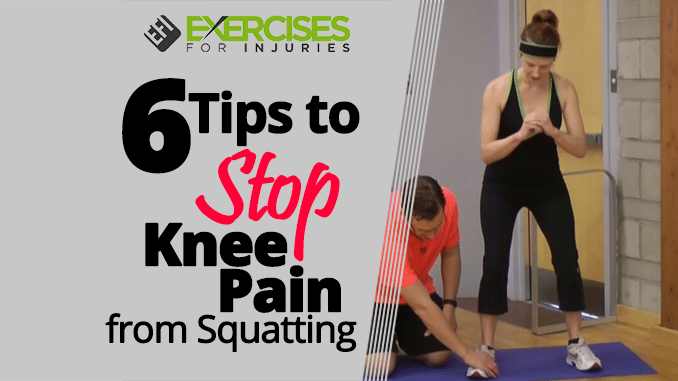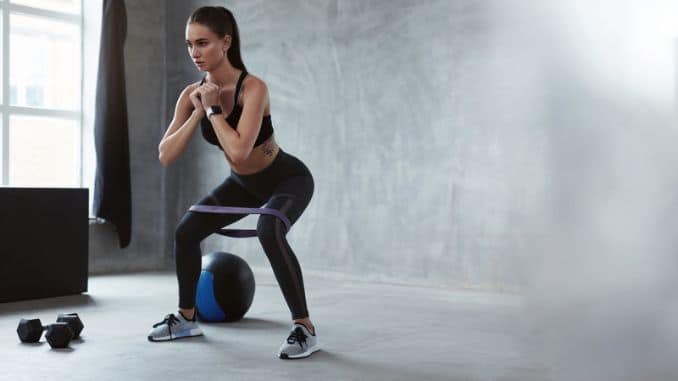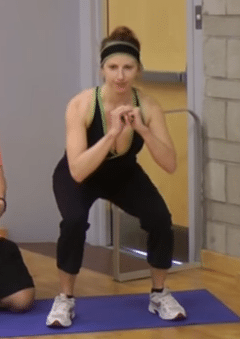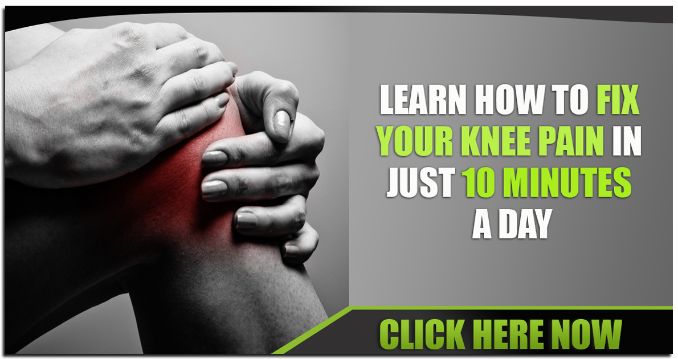
focus on the glutesGetting the squatting position is one of the most important techniques for improving movement. Squatting is a basic movement in virtually every other exercise, from squats and lunges to box jumps and deadlifts. The move involves lowering yourself with your hands on your thighs, bending at the knees and hips until your torso is above your ankles, then straightening up in one motion. Many people experience knee pain when squatting due to improper form or weight. Fortunately, we have here six tips to stop knee pain from squatting.
CLICK HERE to watch the YouTube video.
What Muscles do Squats Work?
Squatting is a compound exercise that targets several muscles across the body. These lower and upper body muscle groups include:
- Gluteus maximus, minimus, medius (buttocks)
- Quadriceps (front of the thigh)
- Hamstrings (back of the thigh), adductor (groin)
- Hip flexors calves
- Core muscles like recti abdominis, obliques transverse abdominis, and erector spinae
What Does Squat Do for Your Knees?
Squatting was once a central part of human life. In contrast to the modern world, our ancestors spent in active rest poses, such as squats. A sedentary lifestyle has been linked to numerous chronic ailments like heart disease, and more importantly, the mortality rate is increased when an individual sits instead of exercising their muscles. This is because squatting requires light muscle contraction. The point is that physical activity (like sitting) doesn’t generate many benefits for cardiovascular health. Combining other forms of movement with spending time in active rest poses like squats are necessary.
Other benefits:
- Strengthen your core
- It can be done anywhere
- Boost strength
- Strengthen the muscles in your lower body
- Burn calories
Here are 6 simple tips to stop knee pain during a squat workout.
- Place your feet a little wider apart. Often, people have their toes pointed straight ahead or have their feet too close together, which causes a lot of stress on the knees.
- Squat with the toes out. This will overcome the tightness or lack of mobility that can be felt in the hip area.
- Put your weight on the midfoot or heel. Standing on your toes while squatting puts more stress on the knees. Balance your weight across your midfoot or heel.
- Focus on your hamstrings and glutes. Focus more on the glutes and hamstrings exercise rather than the quad exercise.
- Keep your shins vertical. This puts less stress on the knee joints and allows you to focus on the glutes | 404 and hamstrings.
- Squat down until your hips are below your knees. This will allow your hamstrings and glutes to help you get out of that bottom position.
If you’re like most people, you probably love to squat. With the right form and technique, squatting can be a great exercise that builds strong muscles and improves athletic performance. But squats are not always easy. There are plenty of ways to make your squat more comfortable and safe. Stay healthy and be safe!
If you want to eliminate your knee discomfort once and for all, click here to check out the Knee Pain Solved program.



